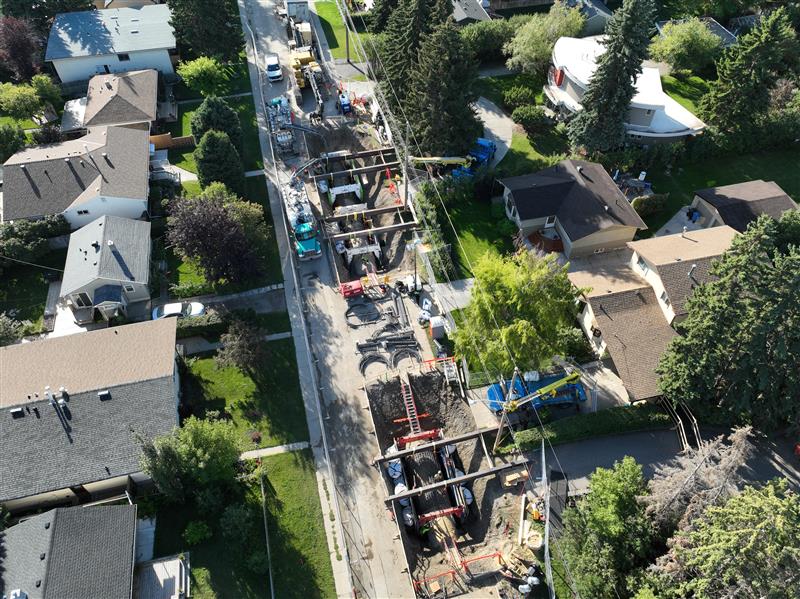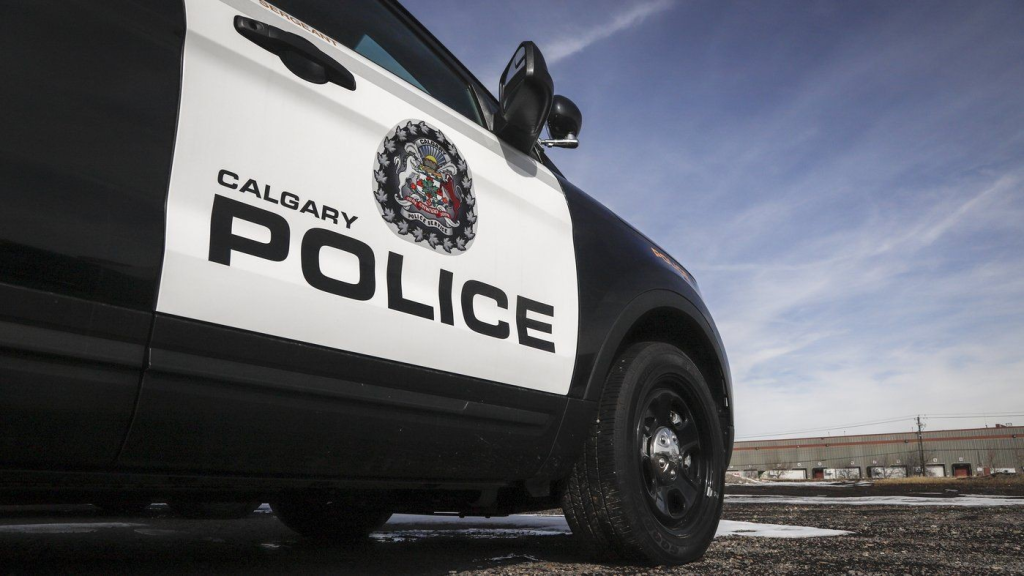Firefighters highlight concerns as budget talks continue at council
Posted Nov 22, 2021 3:07 pm.
Budget talks are underway at Calgary City Hall, with many groups calling for an increase in funding to help them stay afloat.
Among them are Calgary firefighters, as a request is in to provide a $10 million boost to help hire over 50 new members.
Representatives with the Calgary Firefighters Association stood in front of city council on Monday to go more into why they need this increase.
“Firefighters are getting stretched to the breaking point,” said spokesperson Matt Osborne. “This initial reinvestment is an essential move, a first move, helping us to evolve how we serve our community.”
He said the nature of firefighting in Calgary continues to change — pointing to how response times have increased along with their workload — and they also need to make gains on addressing other pressing concerns.
1 Station in Downtown serves over 40k who live in the area and over 130k people who work downtown. 1 Station is one of the busiest stations in the country and protects the communities of East Village, Inglewood, Ramsey, Downtown Commercial Core, Bridgeland & Crescent Heights. 1/2 pic.twitter.com/75AkNPc1OU
— Calgary Firefighters Association (@CGYFireFighters) November 16, 2021
While the service is not opposed to the growth of the city, including plans for new subdivisions on the outskirts of Calgary, Osborne said they have fewer resources than other major cities and this is something that should concern all Calgarians.
“To keep Calgarians safe, we need to ensure our fire halls and fire trucks are properly staffed,” he said. “In a dense urban area, the downtown office towers, high-rise apartments and recreation facilities throughout the core. This is putting the lives and homes of Calgarians at risk.”
National standards state that trucks should have four-member crews on board to ensure they can handle calls more efficiently, but they usually only have two-member crews on most trucks and that means they have to send more equipment to a scene just so they can have enough firefighters.
There does not seem to be an issue with equipment, and Osborne said this is a problem they have been grappling with for a very long time.
“We know this is not going to be done in one budget, but four years is going to be a big lift. Because you’ve inherited this over decades. We’ve been staffing fire trucks with two people since the ’70s,” Osborne said. “Firefighters put out fires, not fire trucks.”
Beyond that, the nature of fighting fires continues to change as building materials change and even different types of vehicles hit the road.
Concerns around the health of firefighters continue to take focus, especially as the service makes more efforts to recognize past members who die from occupational cancers. Osborne said this is being made worse by petroleum products like glues that are used in building homes, and even some furniture have fire-retardant materials on them that release noxious fumes when caught in a blaze.
Money will also be needed to address gaps in training that are coming up as a result of this.
“There’s still a lot to learn, there’s still a lot of training we need to continue on,” said Jason Curry with the association. “There’s also electric vehicles, the evolution of how we respond to motor vehicle accidents and fight electric vehicle fires. It’s game-changing how we have to do that. So we need to have the resources for us to continually be refreshing our skills.”
But firefighters are not only crucial in keeping us safe from fires, as they are also first responders for thousands of medical calls across the city. Several factors are exacerbating the strain in this department, including the worsening opioid overdose crisis and changes to EMS dispatch.
READ MORE:
-
EMS staffing shortage crisis in Alberta putting lives at risk: former paramedic
-
AHS to consolidate EMS 911 dispatching
-
Paramedics’ union continues urgent call for more resources as red alerts stress system
Osborne said while firefighters can administer naloxone to people who have overdosed, they need to start to consider how to handle the underlying mental health aspects of a call such as that.
“I can hear it, that sound of somebody starving to breathe. The gurgling and then starting to help them breathe and then administering the naloxone. Are we trained how to do that? Yes,” said Osborne. “Are we trained on the mental health of dealing with somebody having a breakdown? Quite honestly, no.”
Osborne said in his role as an officer with the Calgary Fire Department, he has to talk to family members who may be experiencing the worst days of their lives, and this is something they receive painfully little training on how to deal with.
Their crews are also having to stay on medical calls for a lot longer than usual, due to the province centralizing EMS dispatch and creating problems with how quickly paramedics can get to a scene.
“The information transfer is slower and it’s not as clear,” he said. “Critical emergency medicals that we respond to as firefighters (are) going up, and now we’re on scene longer which is tapping our resources thinner.”
These are all factors contributing to a deterioration of the mental health of firefighters, and while significant gains have been made in recent years in helping crews talk more openly about the issues they are experiencing, they also need to find a way to get more help on the human resources front.
In addition, councillors also raised concerns about diversity within the department, initially sparked by complaints lodged by firefighters earlier this year about the discrimination they have faced.
RELATED: Claims of racism and abuse at the Calgary Fire Department
Osborne said it is true they need to make a lot of strides to improve this situation, adding they can still do more entice recruits who may not see themselves as a fit within the department.
In response to a question from Ward 5 Councillor Raj Dhaliwal about what could be done to help Sikhs feel more welcome in the department without barring them from having traditional beards or wearing turbans, Osborne said it was a great point and they are looking more into it.
“We can uniform the people’s clothing, but let’s not uniform the people,” he said.
Osborne said they could also consider creating a civilian-led commission, similar to the Calgary Police Commission, to improve oversight and help identify more practices that can make the department better in the future.
Many councillors asked thoughtful questions on the matter, with a recognition that this is an issue the city needs to take a long-term view of.
“We’ve got some work to do in the years ahead,” said Ward 9’s Gian-Carlo Carra.
But citizen satisfaction is also very high, something Osborne said they take extreme pride in and they are humbled Calgarians trust them. He said despite the challenges they face, firefighting is a calling to them and they want to do everything possible to help the community for years to come. The fact remains, however, that in order to do that they need to get some more help quickly.
Dhaliwal cut to the core of it with a question as well.
“When you started this presentation, to me it sounded like the fire department is in a state of crisis. Yes, no?” Dhaliwal asked.
Osborne responded without missing a beat.
“Yes.”








